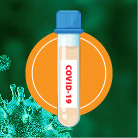≡

Too young for this: Facing Colorectal Cancer at a much younger age

Dr Clara Wu
| Director, Emergency Medicine Centre, and Consultant in Emergency Medicine |
Emergency Cases
Heat stroke or stroke?
Wah Keung is a construction worker. He has to go to construction sites every day. Last month, he fainted suddenly during his visit to a site. When he was found by his colleagues, half of his body cramped, which later couldn’t move. Wah Keung was then sent to hospital immediately. He was semi-conscious.
The doctor then found out that Wah Keung was showing symptoms similar to that of a stroke. Wah Keung’s body temperature reached 42C, so he was put on a saline drip and was given lypholytes to try to lower his body temperature. He woke up half an hour later, and his four limbs could move normally.
Actually, feeling hot, tired and dizzy are symptoms of Heat Syndrome, which is caused by the inability to adjust body temperatures in a hot environment. Heat syndrome is an acute disease with different levels of severity, including heat strokes, heat exhaustion, heat cramps and heat edema. Patients of heat syndrome are conscious, and their discomfort would fade given more rests, heat dissipation and water supply.
Patients of heat stroke would feel dizzy, tired, vomiting, heart-beating, sweating, thirsty, muscle cramping and heat edema, and their body temperature would rise to above 40C due to heat dissipation disorder. Patients would feel confused and even unconscious. Also, the skin of such patients would turn dry, as they have a sweating disorder. They should go to a doctor immediately.
Furthermore, having a heat stroke increases one’s chance of having a stroke. Stroke patients would have high blood pressure but normal body temperature. So if someone has symptoms similar to a stroke, he can be determined whether he was having a stroke or a heat stroke by body temperatures. The casualty rate of heat stroke is about 10% to 70%, and patients are best to be treated within 2 hours of showing symptoms.
Golden treatment period: 2 hours after symptoms shown
On the other hand, heat exhaustion is caused by severe dehydration after heavy sweating. It usually happens to young people who always provide physical work, including marathon runners, sportsmen, disciplined services members and construction workers. Dehydration and sodium deficiency would cause circulatory failure, and this can be seen as the initial stage of a heat stroke. If this is treated inappropriately, it would develop into heat stroke. If heat production is faster than heat dissipation, one’s body heat would accumulate and lead to central nervous system disorder, delusional disorder, and body temperature adjustment disorder. It would also increase body temperature.
If one gets too much exercise in hot temperature, there would be over-sweating, leading one to lose a large amount of salt and water, and his muscles would cramp. If peripheral blood vessels expand and lose much water, his blood circulation would be affected, making the supply of blood to his head insufficient. It creates a series of initial symptoms of heat stroke, i.e. heat syncopy.
Apart from the hot environment, drug abuse (of amphetamine) would also make dehydration easy, as drugs would stimulate metabolism and increase body temperature. These people may also show heat syndrome symptoms if they are not exposed to sunlight.
If someone is doubted to have a heat stroke, he has to be moved to a shadow area with ventilation, and he has to lie down and release his clothing. He has to be sprayed with cold water, also, his neck, underarm and groin should be covered with an ice bag. And he has to be kept cool until he is awake.
Don’t cool down suddenly
Spraying water all over the skin allows water to evaporate off the skin, which would cool down the body; but covering the whole body with ice would contract the blood vessels, which would affect heat dissipation, leading to more serious complications. The best way to deal with heat stroke is to send the patient to hospital. Patients may need to have a saline drip to lower body temperature.
Wah Keung was told by his doctor not to over-exercise for a long time under the Sun. He was advised to wear light-coloured shirts with long sleeves to reduce heat absorption; and he was told to go to shadowy area each time after 30 minutes of exposure to the Sun. He was also advised to get some drinks with electrolytes to get in enough water. These actions are all helpful to reduce the chances of getting a heat stroke.








